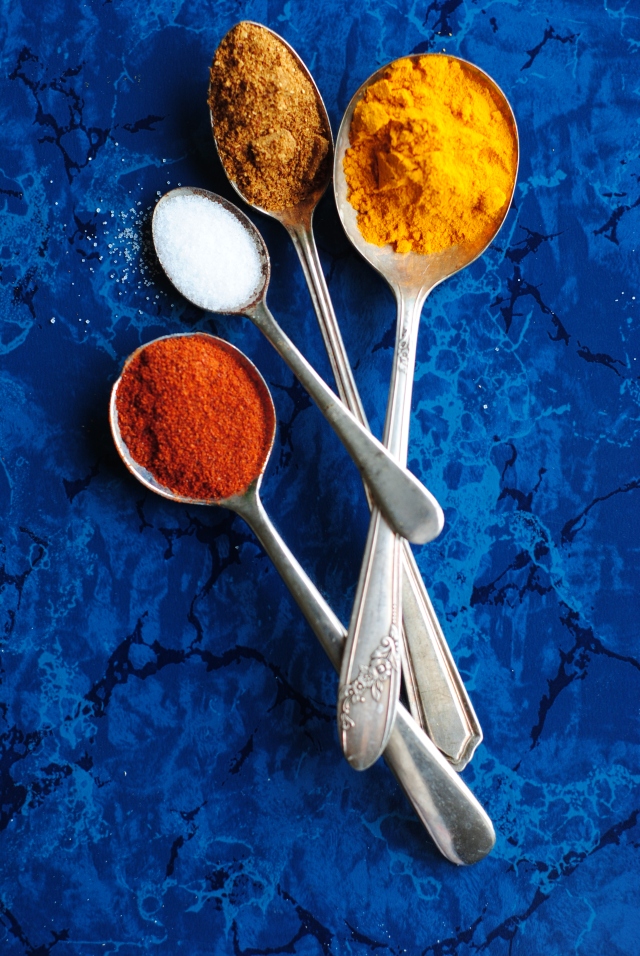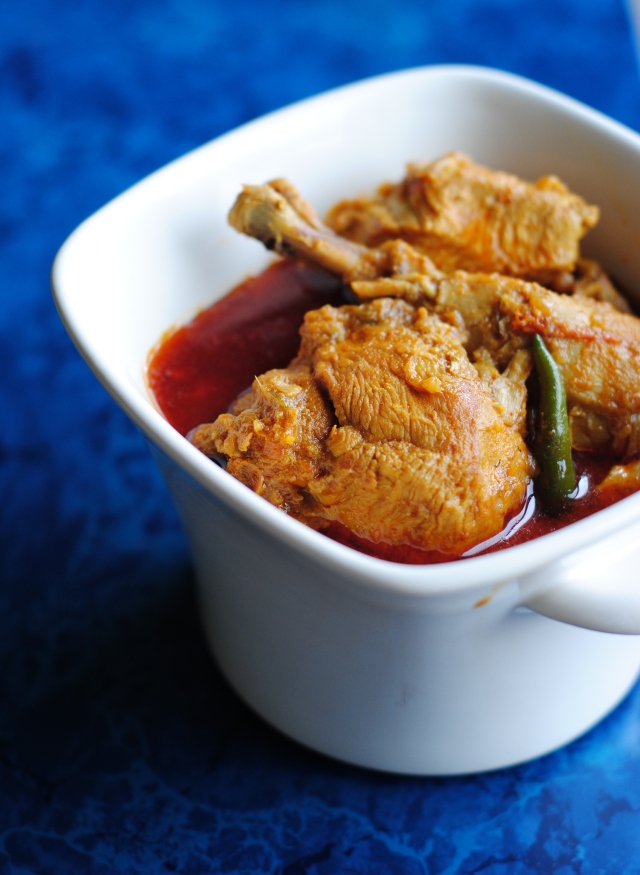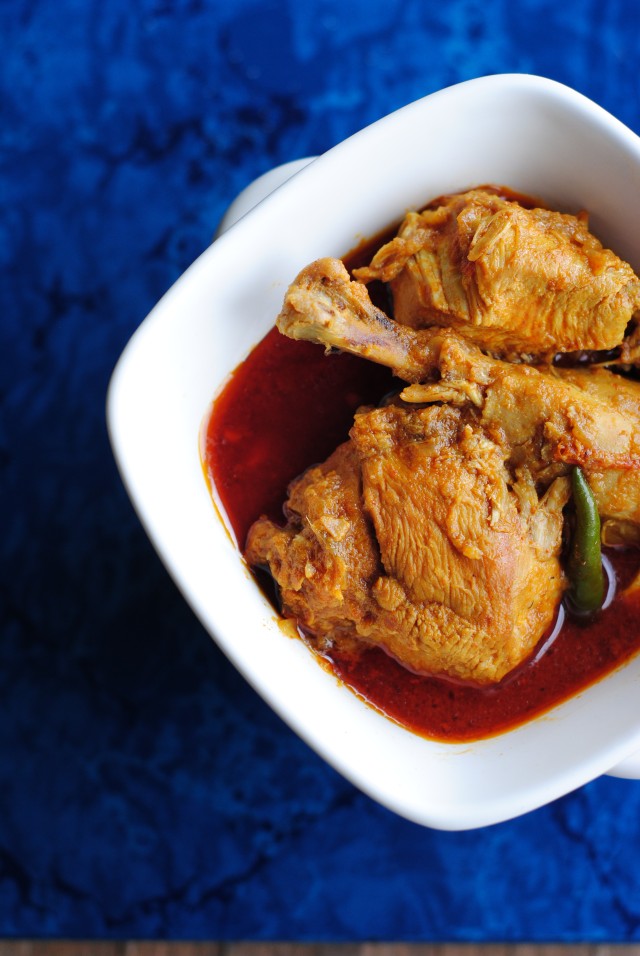We have currified the world…literally. There is no continent left behind (yes, Antarctica too) that does not have its own version of this multilayered, adaptable food. I am not going to give you a Curry 101 class here or tell you if it really came from the Tamil word ‘kari’ or not. Before I came to the USA, I was like a hermit crab; sheltered in my own narrow world and pretty much isolated from anything which did not directly affect my life. The only world news I found exciting was the whereabouts of Osama Bin Laden. But to be true, he was almost our neighbor, not really ‘phoren affairs’, as the Bengalis would say.
After I moved here, my horizons broadened with a speed that literally left me breathless. To revert to a food analogy, you know the feeling when you put one spoon of that delicious curry in your mouth and a million flavors burst almost immediately? It happened to me too, I mean in terms of ‘phoren affairs’. But the bulk of my broadening knowledge base, unlike that of my polymath husband, was still mostly related to cuisines of the world. I was fascinated to see people adopting recipes and making their own versions and curry was no exception.
“Curry”, that universal tag we put on almost every Indian dish is truly versatile. Thank goodness someone came up with that term. Otherwise we Indians would have to write five sentences to explain it. I find it very interesting to see how food travels and adapts and I don’t think anything else comes close to curry and its travel story. If you go to the West Indies, you’ll find Indo-Caribbean curries cooked by the immigrant Indians who traveled there during the British Raj during the 18th and 19th centuries to work as laborers in the sugarcane fields. Japan got the first taste of curry around the same time and there, you’ll find karē raisu which is curry served over rice. If you are in Indonesia, you are well advised not to leave the country without eating Rendang or Kari Ayam. Thailand has a whole spectrum of curries, whether red, yellow, green or Massaman, all equally delicious. Malaysia will greet you with vibrant reddish-orange gravy with chunks of meat and coconut milk in it. The Burmese have their own versions, some of them remarkably similar to Indian curries. The Chinese adopted it to suit their palate and it is now appearing on American-Chinese menus. The French who colonized parts of India like Pondicherry, have also carried their interpretation back with them in the form of ‘Vadouvan’, a spice mix with roots in Madras curry powder but has non-Indian spices like thyme and rosemary in it. ’ I use it to cook chicken and fish and love the slightly unusual flavor profile added by the European spices. The Danish, who went to India wishing to colonize us, went back petty soon and took back curry with them. The ‘Boller i karry’ is Madras curry powder cooked in a cream sauce with pork meatballs. I made it once but it’s too rich and creamy for my taste. I am planning to modify it to suit my taste (thus making “circumnavigation curry”, which went from India to Denmark and back to India). Currywurst in Germany is as popular as hotdogs in the US. They even made a museum for it (and I am NOT kidding).
The British need a paragraph of their own I guess. You don’t merely put them along with a bunch of other countries when it comes to curry. They have organizations to keep the curry tradition alive and to make sure no one adulterates the recipes and their authenticity. After almost two centuries, when the British decided to leave us alone and finally mind their own business, among the things they could not leave behind were the Kohinoor diamond and curry powder (Veeraswamy’s and Bolst’s were the two most popular brands). Decades later, maybe still suffering subconsciously from a nostalgia for their erstwhile colony, they chose chicken tikka masala (nothing but chicken morsels cooked in a creamy curry gravy) as their national dish. Many generations of Indians have suffered from a bad British colonial hangover; as such, it is poetic justice that we got our own back at them….in curry form.
I am not going to talk about the curries in the Indian subcontinent because I’ll need to write a book before I feel like I’ve said enough. India, Nepal, Bangladesh, Pakistan, all cook curries in one form or the other. But if you have eaten curries from these countries, you’ll know that they are very different with an underlying similarity to them. The ‘tarkari’ in Nepal is very different from the curry in Pakistan which most likely has an onion-garlic base. The taste of curry in Bangladesh will depend on whether it is cooked by a Hindu or a Muslim. The Muslims will cook like the Pakistanis with onions and garlic while the Hindus will try to avoid them as much as possible. The South Indian will more likely have curry leaves and tamarind in it compared to a Gujarati (west of India) curry with a chickpea flour taste. The Parsis will put apricot and fried potato sticks in it. The Bengalis will make light curries to aid their famously delicate digestion but the Nagas (North East India) will add a dash of bhut jolokia (ghost pepper) which is supposed to make dead men come alive.*******
To counter the information overload I just made you go through, I present now a basic curry recipe with no out-of-the-world ingredients. A simple, humble and everyday curry. Eat it with bread, naan, roti or rice…it will be delicious every time.
Recipe:
Ingredients:
Chicken: around 3lbs. (bone in, skinless) cut into medium pieces
Ginger-garlic paste: 2-3 tbsp. (or, grind 3” fresh ginger piece with 4-5 cloves of garlic to a smooth paste)
Tomato: One small
Tomato paste: 1 tbsp. (optional but if you use it, you’ll get the vibrant rich color)
Onion: One cup, finely minced
Turmeric: 1 tsp.
Bay leaves: 2
Sugar: 2 tsp.
Red chili powder: 1 tbsp. (adjust according to your taste)
Green chilies: few, split length (again, adjust to your taste)
Cinnamon: 2” piece broken into two
Cardamom: 2, slightly bruised with a heavy spoon or back of a knife
Cloves: 3
Mustard oil (preferably)/any neutral oil: 2-3 tbsp.
Salt to taste
- Heat up the oil in a heavy bottom wok/kadai or pan. If you are using mustard oil, do not let it smoke or burn; gradually heat it to get rid of the raw smell.
- Add the sugar and let it caramelize. Keep an eye on it, sugar gets burnt very quickly.
- Add the cinnamon, cardamom, cloves and the bay leaves. Let them sizzle a bit and release the aroma.
- Add the onion and sauté them on medium heat. Medium heat makes the onion caramelize beautifully and brings out the sweetness.
- Once the onions are nicely brown, add the ginger-garlic paste, red chili powder and turmeric. Sauté the paste until oil leaves from the side. If you think that the spice paste is sticking to the pot, sprinkle a little bit of water.
- Add the tomato and the tomato paste (if using) and again cook the whole thing until the tomato gets mushy and the paste becomes deep reddish brown is color.
- Add the chicken and cook on medium high heat until chicken is no longer translucent and again oil starts leaving the pan. (I usually smell the spoon to check if there is any raw smell from the spices or not).
- Add a cup of warm water and salt and mix everything well. If you are using regular chicken, cover and let it cook on medium heat. If you are using organic free range chicken, no need to cover it. The free range chicken will be more than half cooked while sauteing. You can cook it uncovered. (if you think you need more gravy, add another half cup water)
- After 15-20 minutes, check if the meat is cooked or not and also the seasoning.
- Add the green chilies and let it rest (covered) for 15-20 minutes before serving.
- This curry goes well with either roti/naan or rice.
****** I have generalized the curry for few communities but tried to give you the most common way they cook it. They are not the only method they use and no way I am claiming to be an authority on how everyone cook curries. Please feel free to share any information or opinion.






Very nice to see a simple chicken curry and with so much less oil. Most Bengali chicken curries, I find in blogs have 6-8 tablespoons of oil for 2 pound chicken. Nice pictures and a very good recipe.
Really? They use that much oil? Wow!! I cannot gulp down that much grease.
Mouthwatering recipe. Thanks for sharing this.
Simon